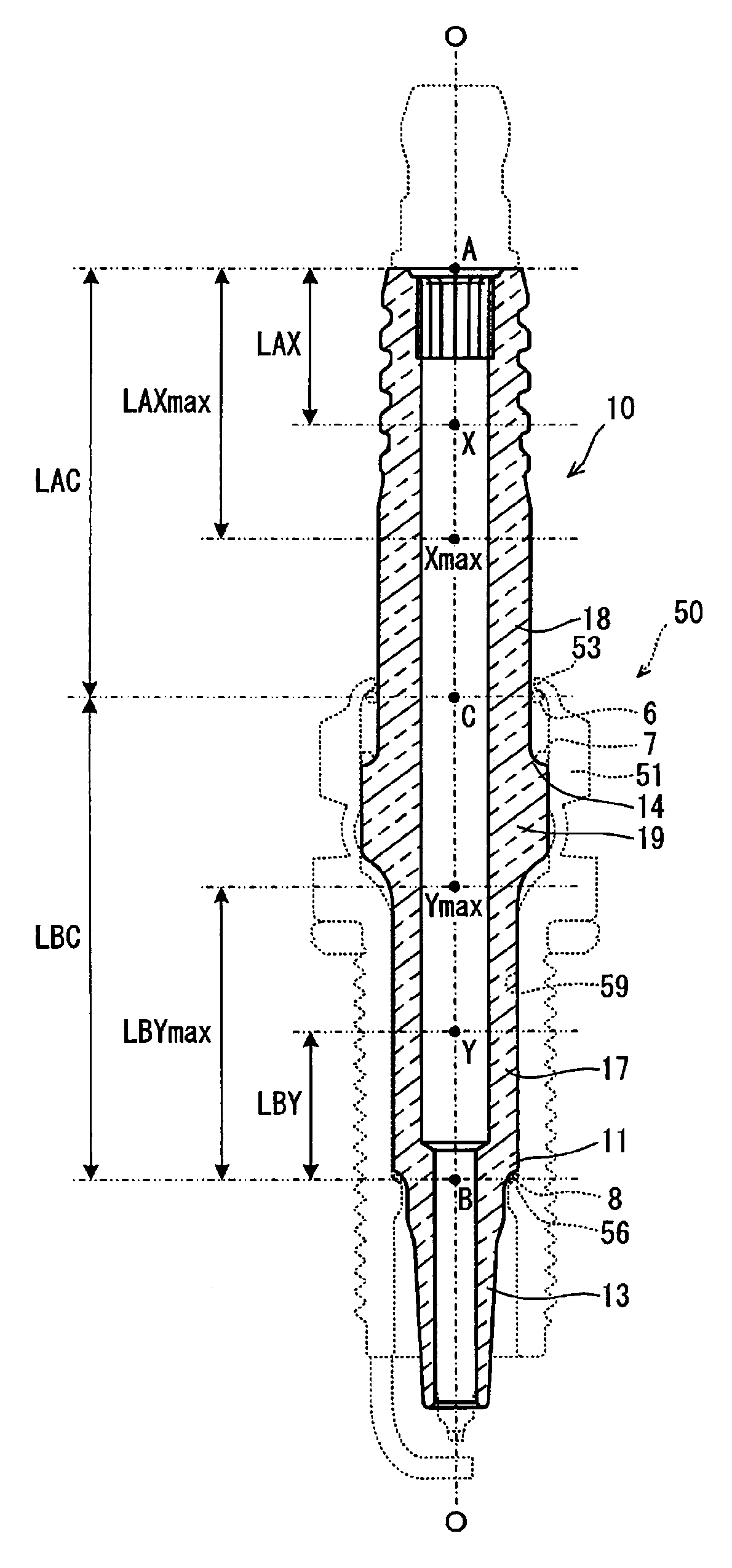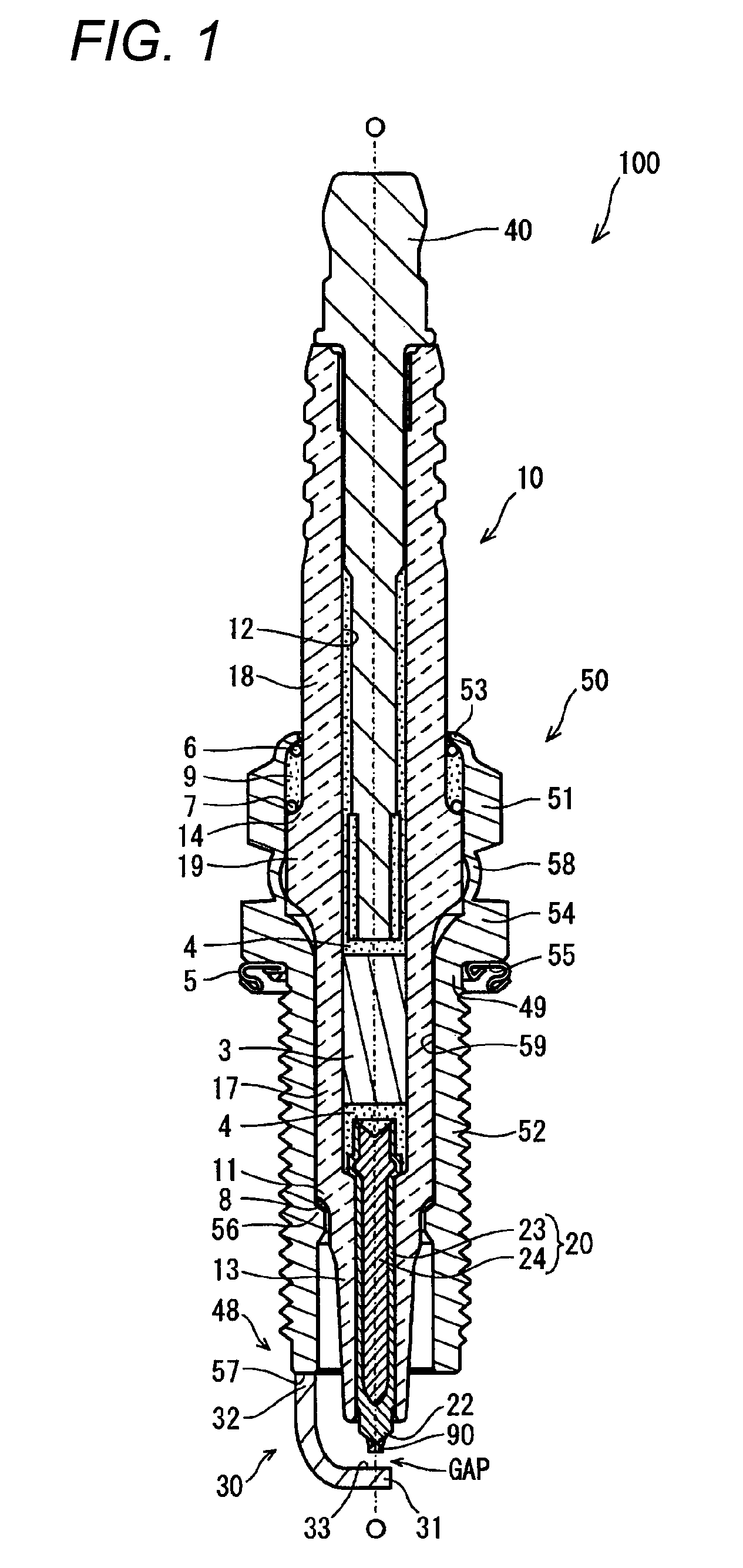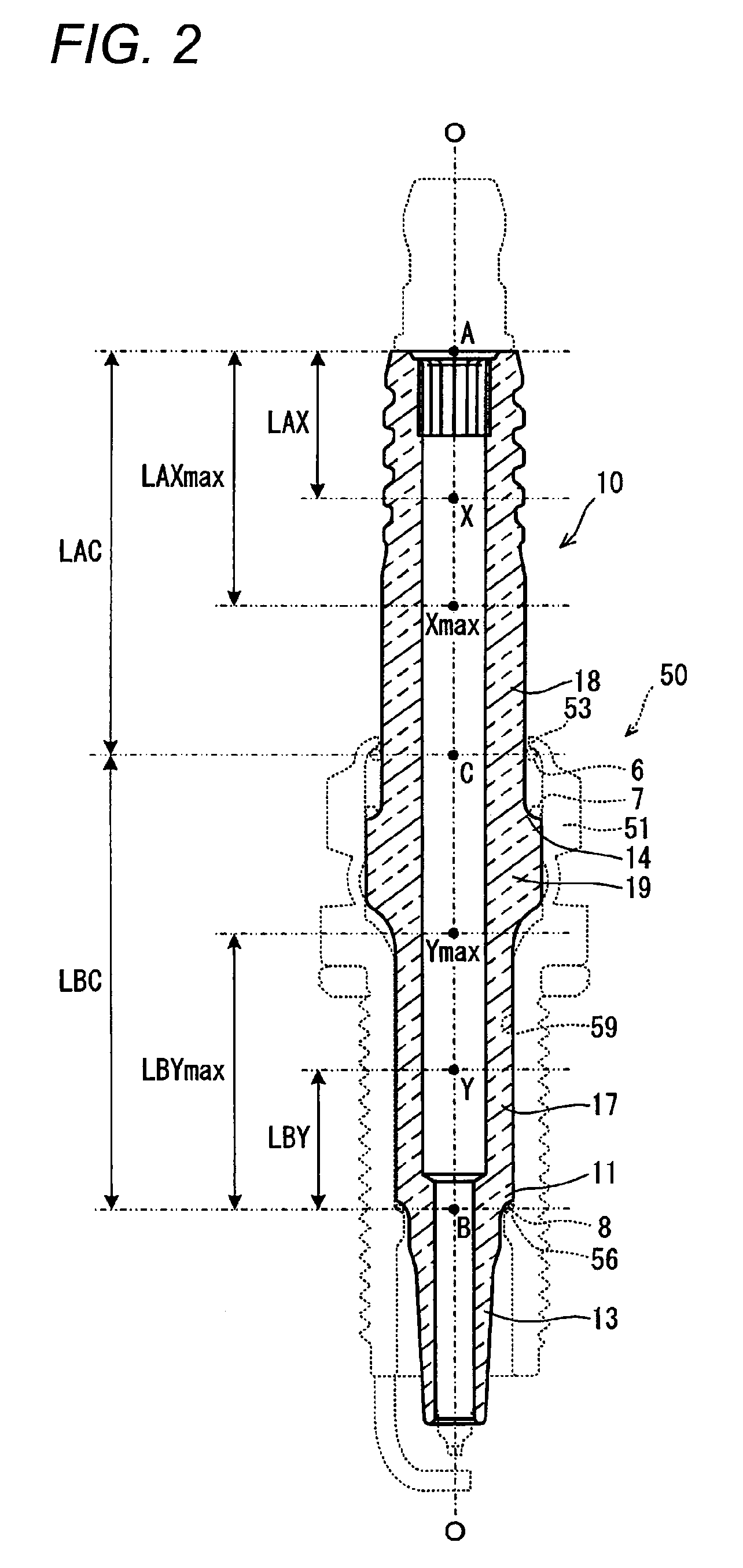[0058]In the spark plug according to Claim 1 of the invention, since the proof strength against the local stress concentration can be increased by adjusting the balance of the size and modulus of section of the insulator, even though the rear end side body portion of the insulator is subjected to the external force in the bending direction perpendicular to the axial direction, the stress that is produced in accordance with the external force is dispersed in the interior thereof, whereby the stress is mitigated. As a result of which the generation of cracks or fractures in the insulator can be prevented. Although this will be described in greater detail below, by regulating the relationship between τA and τB, which will be described later, the balance of strength (rigidity) of the insulator is adjusted.
[0059]The insulator is held within the inner hole of the metal shell in such a manner as to be supported by the crimping portion and the ledge portion, via the packing, of the metal shell. Because of this, when the insulator receives the external force in the bending direction perpendicular to the axis at the rear end side body portion thereof, a point of effort is the position received the external force, the supported position of the insulator by the crimping portion which lies closer to the point of effort than the ledge portion (the position C where the crimping portion is brought into contact with the insulator at a rearmost end side) acts as a fulcrum. Then, since the movement of the point of application side is restricted by the supported position of the insulator by the ledge portion (the position B where the packing is brought into contact with the insulator at a frontmost end side), the stress corresponding to the external force received at the point of effort is applied to the portion of the insulator which lies between the position B and the position C.
[0060]Here, τA denotes a proof strength against bending taking place between the point A and the point C of the insulator, and is defined by a position Xmax where the strength (rigidity) of the insulator becomes the lowest between the position A lying at the rear end of the insulator and the position C. As the value of τA is smaller, the strength (rigidity) of the insulator becomes high. In addition, τB denotes a proof strength against a stress applied between the point B and the point C in accordance with bending taking place between the position A and the position C of the insulator, and is defined by a position Ymax where the strength (rigidity) of the insulator becomes the lowest between the position B and the position C. As the value of τB is smaller, the strength (rigidity) of the insulator also becomes high. Consequently, in the event that both the values of τA and τB are small, specifically speaking, both the values are smaller than 0.47, since the insulator originally has a sufficient proof strength against bending, strength balancing adjustment required for dispersion of the stress is not necessary.
[0061]Then, with a view to reducing the diameter of an insulator so as to realize a reduction in size of a spark plug, the invention is intended for an insulator tending to have cracks or fractures due to local stress concentration in the event that a rear end side body portion of the insulator is subjected to an external force in a bending direction, that is, an insulator in which at least either τA or τB takes a value equal to or larger than 0.47. According to the inventor and others, in an insulator in which at least either τA or τB takes a value equal to or larger than 0.47, when paying attention to the relationship between τA and τB (τA / τB) to adjust the balance of strength (rigidity) so as to mitigate the local stress concentration, it has been found that the insulator may be designed, satisfying: 0.71≦τA / τB≦1.27, so as to prevent cracks or fracture of the insulator.
[0062]Also in the spark plug according to Claim 2 of the invention, since the proof strength against the local stress concentration can be increased by adjusting the balance of the size and modulus of section of the insulator, even though the rear end side body portion of the insulator is subjected to the external force in the bending direction perpendicular to the axial direction, the stress produced in accordance with the external is dispersed in the interior thereof, whereby the stress is mitigated. As a result of which the generation of cracks or fractures in the insulator can be prevented. Although this will be described more specifically below, by regulating the relationship between τA and τB, which will be described later, the balance of strength (rigidity) of the insulator is adjusted.
[0063]The insulator used in the spark plug according to the invention set forth in Claim 2 is held within the inner hole in the metal shell in such a manner that the insulator is supported by the crimping portion via the second packing and the ledge portion via the first packing of the metal shell. Because of this, when the insulator receives the external force in the bending direction perpendicular to the axis at the rear end side body portion thereof, a point of effort is the position received the external force, the supported position of the insulator by the crimping portion which lies closer to the point of effort than the ledge portion (the position C where the second packing is brought into contact with the insulator at a rearmost end side) acts as a fulcrum. Then, since the movement of the point of application side is restricted by the supported position of the insulator by the ledge portion (the position B where the first packing is brought into the insulator at a frontmost end side), the stress corresponding to the external force received at the point of effort is applied to the portion of the insulator which lies between the position B and the position C.
 Login to View More
Login to View More  Login to View More
Login to View More 


